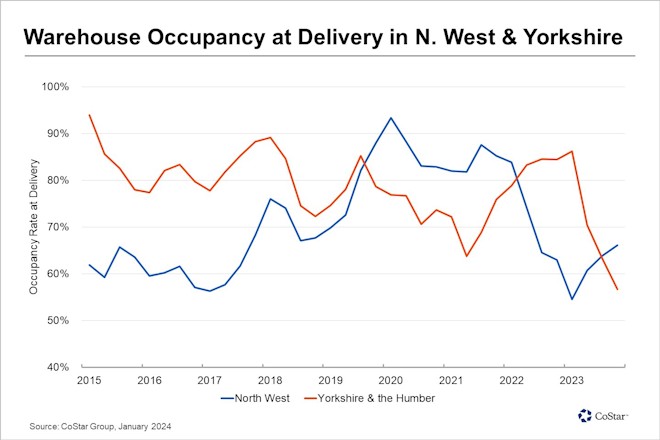Welcome to The Subplot, your regular slice of commentary on the business and property market from across the North of England and North Wales.
THIS WEEK
- Sale of the century: are multi-billion-pound local authority asset sales moving closer?
- Elevator pitch: your weekly rundown of what is going up, and what is heading the other way
THE ELEPHANT IN THE ROOM
What’s the answer to the £23.2bn question?
Local councils own £23.2bn of investment property. Does selling it, or does hand-holding by the property profession, offer a better way to keep regeneration projects going?
Councils are in trouble – big trouble. Bankruptcies and cuts to services are inevitable, and that puts higher-risk, longer-term regeneration projects in the firing line (Subplot, 4 January). But perhaps there’s a way out, thanks to the £23.2bn (government estimate) local authority investment property portfolio. A large-scale asset sale has been in the air for months. Is the government finally about to press green for go?
What this is not
Let’s be clear. This does not mean the assets councils use to deliver services. A Department for Levelling Up, Housing and Communities consultation, which ended yesterday, makes this clear if you read on to the bitter end. “The intent is to encourage divestment of assets held only for revenue and not for delivering the objectives of the local authority, and providing additional incentives to recognise that local authorities selling such assets will likely be foregoing future revenue income.” So we’re talking about income-producing assets, not a library that’s still in use (for instance).
Nerdy stuff
The second thing to get clear is the motive, which is nerdy but important: this is about blurring the lines between revenue spending (day-to-day costs) and capital spending (building things) to give councils a bit of routine flexibility. We don’t need to get into the details, but the gist is for it to help fund spending that improves council efficiency, to boost council reserves, or avoid penalty payments on loans. It probably won’t pay for your bin collection.
Limited appeal
In other words, it’s a very limited offer, not a get-out-of-jail-free card. A big asset sell-off might mean some tasty plums for property investors but don’t get excited. The offer isn’t one many councils will feel attracted to. Moreover, not every council has assets you’d want to buy, selling means losing the income, and you can only sell them once. And the timing isn’t good: CBRE reckons capital values fell on average 3.9% in 2023, 13.3% in 2022. Who would choose to sell in a falling market?
Time to buy
A falling market is a good time to buy, not sell, and that’s what some local councils are trying to do. Snap up an old shopping precinct today at a bargain price, and tomorrow’s town centre regeneration project begins to feel more doable and viable. That’s what Stockton-on-Tees Council was trying to do in Billingham, and was waiting for levelling-up funding to help do it (which they eventually got, on the third time of asking).
Come to Billingham
In the meantime M Core, which makes a speciality of acquiring these sorts of centres, snapped up the 320,000 sq ft centre in a deal with St Modwen. M Core’s vehicle Evolve Estates almost certainly paid a lot less than the £14m St Modwen paid 10 years ago. Place Yorkshire reported that conversations with the council have begun.
Best friends forever
The problem for many councils is that big property development projects aren’t really their thing. Procurement is complicated, the risks are hard to quantify, and selecting suitable partners is often both a first and fatal step. Get that wrong and everything else goes wrong. This is where the British Property Federation has a suggestion in the form of some extended hand-holding and/or shared learning, depending on how you like to see it.
We learn together
The BPF plan is to offer cash-strapped councils a sounding board as they are forced to step into the unfamiliar world of private property development. The aim is to work with three or four target local authorities during 2024 to help make use of private sector finance and expertise for vital regeneration projects. The idea goes that this would provide a safe place to test out early-stage ideas and talk over approaches. Sounds cosy.
Cosy chats
The BPF is far, far too savvy to say that this means weeding out unviable proposals and weaning councils off the idea that the most local/glamorous developer is always the best choice, but that’s what it is. It will take the form of workshops and roundtables, says BPF assistant director Rob Wall. Expressions of interest are due by the end of March, with the chat starting over the summer.
If the aim is to find ways to keep healthy partnerships going between the property business and local councils, the politically alert BPF has probably picked the winner. Council asset sales aren’t going to be big news, and if they are big news it probably won’t be good news.
 ELEVATOR PITCH
ELEVATOR PITCH
Going up or down? This weeks movers
Sometimes being told you’ve not done anything wrong can be very painful, as the public authorities behind the Teesworks development found out. But for beds and sheds, it all looks rosy. Doors closing.
 Teesworks
Teesworks
Have you been following the Teesworks debacle? For those playing catch-up, this is about the former Redcar steel works and the complex interactions of 500,000 tonnes of scrap steel, 450 acres, a development corporation, a combined authority, and two private developers called Chris Musgrave and Martin Corney. A government review this week rebutted claims (made under the protection of Parliamentary privilege) that there was something fishy going on.
But in the course of exonerating all involved, an independent panel issued two-dozen recommendations which really ought to be blush-making for anyone involved in public sector property or regeneration.
The ice-cold language of the civil service is, in its way, breathtaking. The Tees Valley Combined Authority and the South Tees Development Corporation “should develop a full understanding of the liabilities” involved in the project and “ensure appropriate management arrangements are in place to manage and mitigate the consequential financial risks.” Wait, what? You mean they hadn’t done that?
That’s recommendation number one, and they get deadlier. They include suggesting up-to-date financial models, the combined authority working to “ensure it meets its statutory obligations…, to enable value for money to be delivered and evidenced”; keep an at-least-annual eye on the development corporation and its financial risks, untangle who is who so that “any and all communication is clear in terms of the organisation being represented”; think about oversight, and maybe councillors should take some advice from their council’s officers, whilst the officers should be more inquisitive about what’s going on. And so on.
The best, most chilling, recommendation is: “Ensure the board are provided with comprehensive and accurate reports, supported by appropriate advice in a timely fashion so they can properly consider and debate the decisions to be made.” That’s the kind of thing that shouldn’t need saying, but obviously did need saying, because the independent panel said it.
 Beds and sheds
Beds and sheds
The ever-popular investment combination of beds and sheds gets a boost from two data drops.
Sheds first. Last week Subplot reported some CoStar data revealing a slowdown in the big warehouse scene. A serious fall in the volume of pre-lets made the headline. Now CoStar has released regional data which – as regional data often does – slightly changes the picture.
As the table below shows, Yorkshire has traditionally been more inclined to pre-lets than the North West. Then in 2019 things got badly shaken up, and the North West (where supply was low, and demand high) became the pre-let region to watch. Now it’s all gone wonky, with both seeing fewer pre-lets but Yorkshire falling off a cliff. The good news is both are better – tighter – markets than the UK average. CoStar said that occupancy at delivery (eg pre-letting) last year was higher in the North West (66%) and Yorkshire (57%) than the UK overall (54%).
The beds data comes from CBRE, whose UK Multifamily Index shows (unsurprisingly) that capital values have fallen, down 2.2% in the year to September 2023. This compares with commercial property values which saw falls in double figures over the same period. Multifamily rents are, however, sharply up (9.5%).
However, multifamily housing assets in the regions did better than those in London. Capital values declined by 5.7% for London assets in the year to September 2023 whereas they increased by 0.8% for assets in the rest of the UK. On the other hand, London assets saw rents rising 10.9% but everywhere else scored only 8.5%. Either way, investors aren’t doing badly.
Get in touch with David Thame: david.thame@placenorth.co.uk






